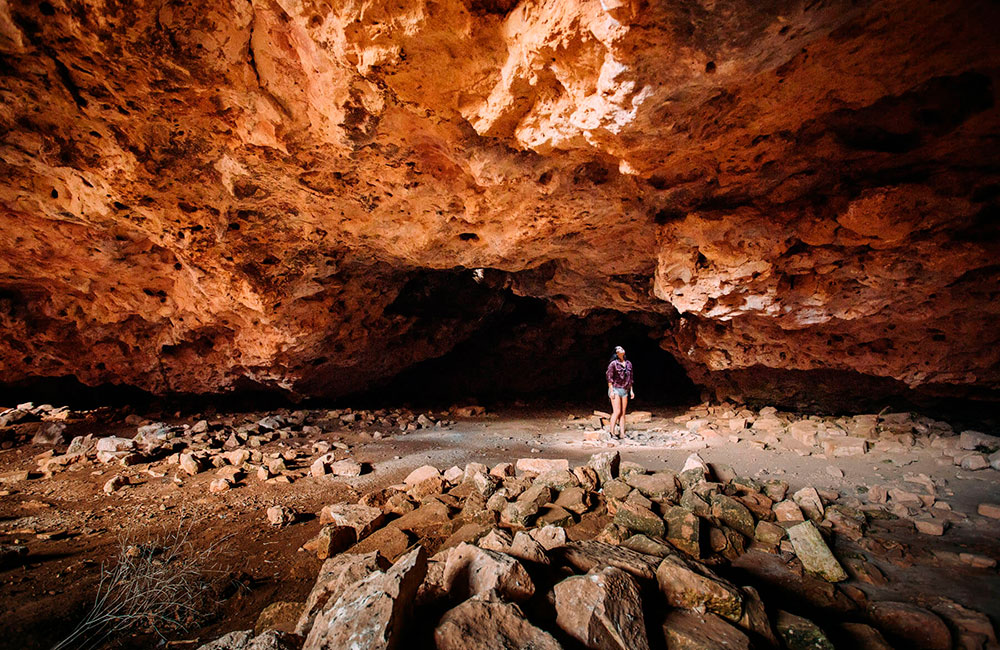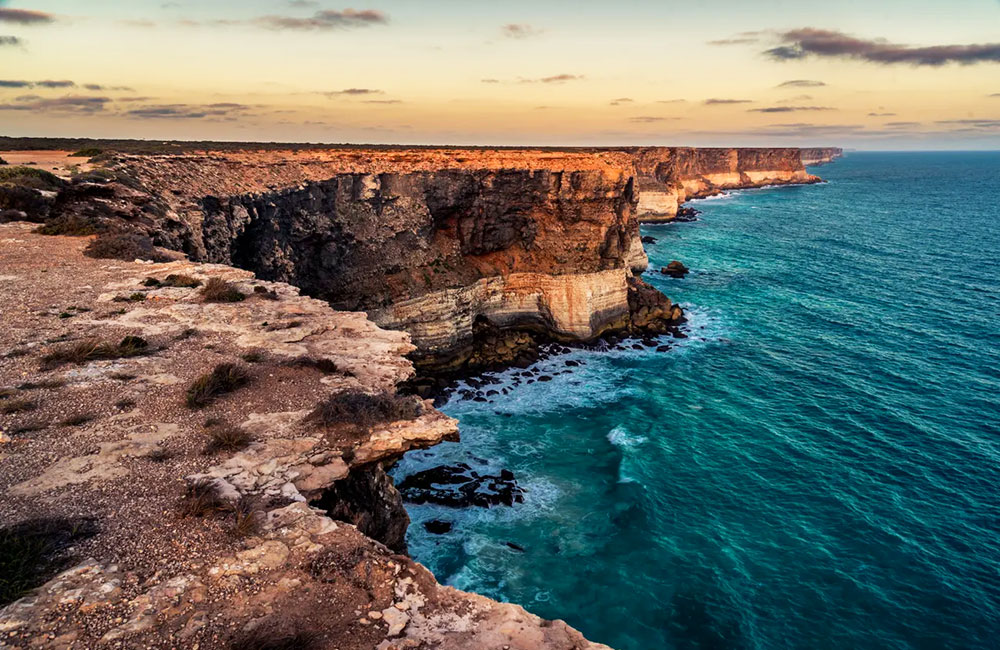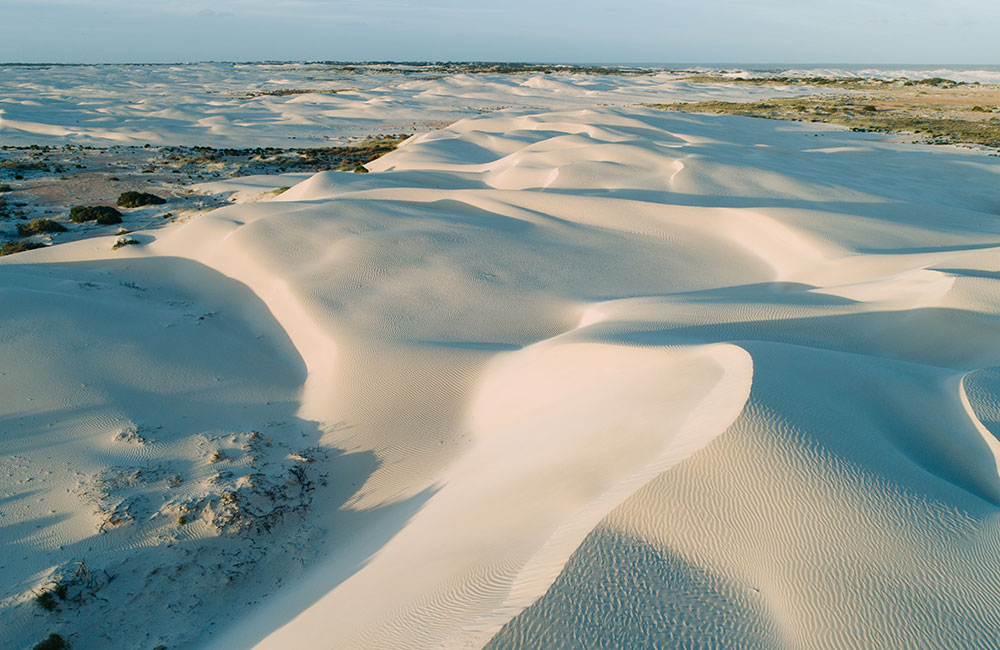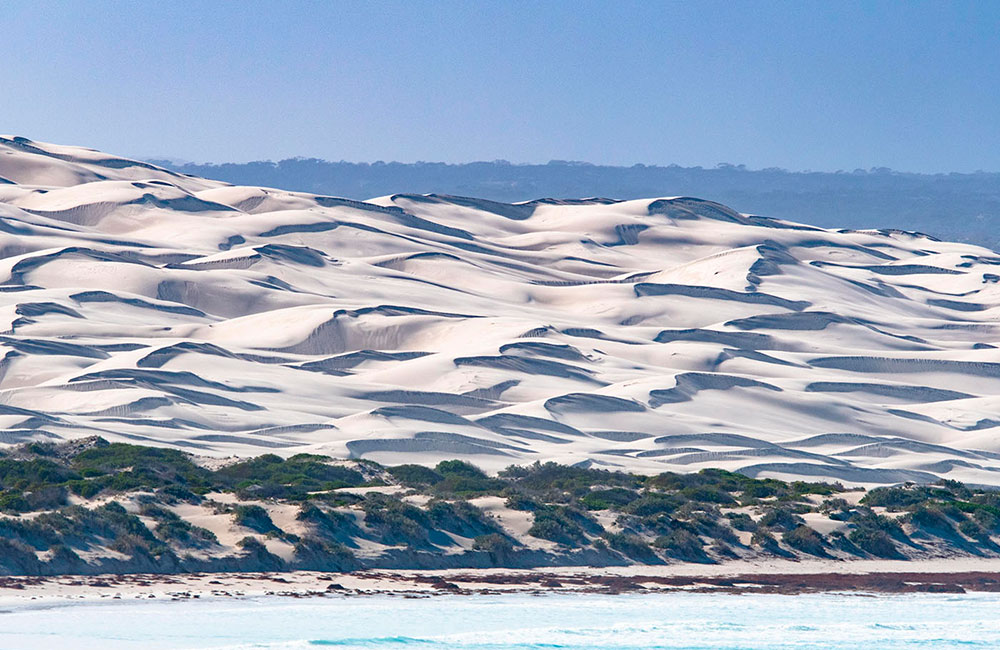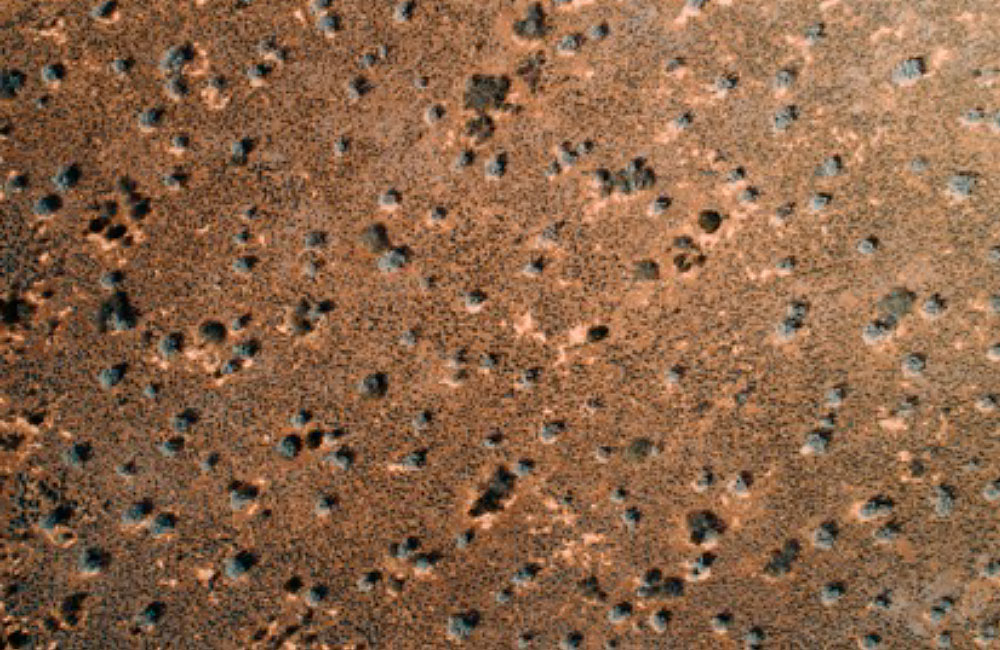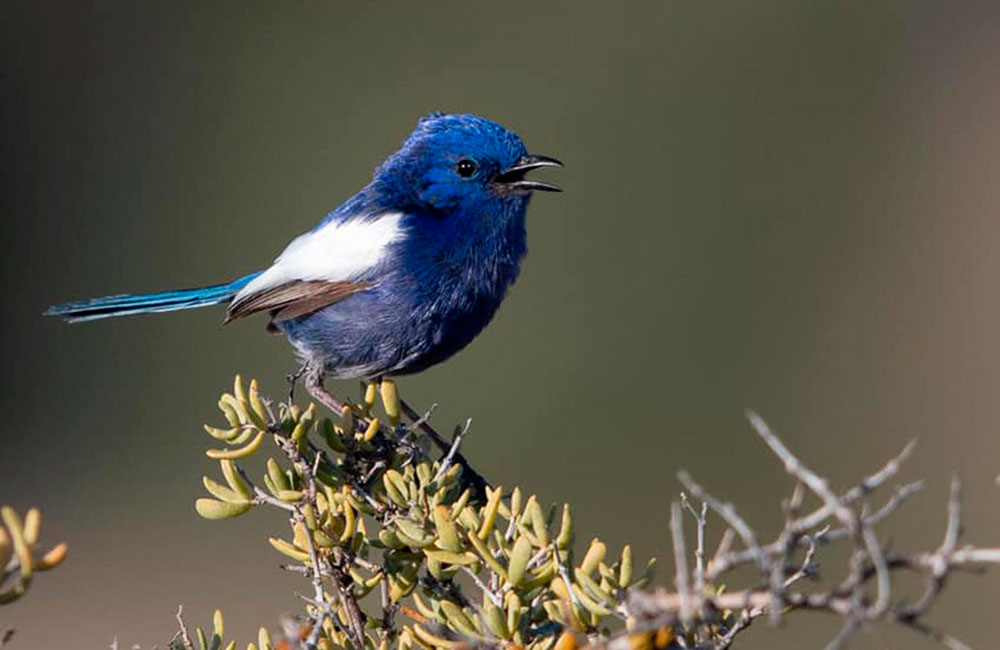Yalata Lands contain spectacular coastal scenery with large dunes, fringing reefs and few obvious signs of human presence.
Our Lands, which span over 458,000 hectares, are recognised by the National Wilderness Inventory as of biodiversity importance with little damage and development, and the continuation of natural ecological processes. Given the fragility of its soil, we have ‘no access’ areas that are maintained as environment conservation zones.
The Lands are the largest area of mallee vegetation in the state and form part of 3 million hectares of mallee from Eyre Peninsula across to Western Australia. We are home to many species of birds, insects, and other wildlife, and are an important seed bank.
Nullarbor Plain & Caves
The Nullarbor Plain stretches for approximately 72 km from South Australia to Western Australia, extending inland from the Great Australian Bight for approximately 400km. Its annual rain fall of 250-300mm seeps through the flat Nullarbor Limestone. As a result, underneath this desert like plain is another world of vast dry and wet cave and tunnel systems. Many caves like Cocklebiddy, Warbla and Weebubbie feature beautiful lakes of blue water and huge passages running under the Nullarbor Plain.
Bunda Cliffs
West of the Head of the Bight rise the majestic Bunda Cliffs. The cliffs extend for 200 kilometres to Wilson Bluff on the Western and South Australian border, and range in height from 40 to 70 metres above sea level. They were created millions of years ago from changing sea levels and the uplift of the Nullarbor Plain. The cliff front also stretches to the east but now lies deep under the sand of the present dune system.
Illcumba Dunes
The Far West Coast exhibits some of the most beautiful wind shaped dune fields in Australia. Appearing as white streaks on the horizon, these coastal dunes are made from shell and rock material broken down over millions of years. This material is washed up on the shore where it dries, before being carried on the wind to the waiting dunes. The hardy vegetation helps to colonise the dune by securing the drifting sand.
The Head of Bight
The clifftop at the Head of Bight and within The Lands are recognised as the best and most reliable opportunities for whale watching in Australia. During the whale watching season, which occurs from June to October, over 15,000 visitors experience the unique environment of the Great Australian Bight Marine Park. A traditional waterhole and the Illcumba meeting place, both areas of cultural significance, are also nearby.
Yalata's Vegetation
The majority of The Lands is covered by Mallee open scrublands, forming a woodland in many places. The dominant varieties are the red Mallee (Eucalyptus Socialis), white Mallee (E. Gracilis) and boree (Melaleuca Pauperiflora). You will also find the Sturt Desert Pea flower (Swainsona Formosa or Clianthus formosus), one of Australia’s best known wildflowers, and might come across the native apricot tree (Pittosporum Phylliraeoides) laden with its colourful woody ‘fruits’.
Night Sky
The southern skies above Yalata provide an enchanting evening display and the opportunity to study the atmosphere without the interference of city lights. As the earth moves around the sun on its yearly journey, the night sky slowly changes. Using star charts and a pair of binoculars, you can search for the myriad of constellations above.
Wildlife
Despite being very dry and arid, many animals have adapted to the conditions of the landscape. You can come across kangaroos, wombats, emus, dingoes, a diverse array of birdlife and reptiles, including some of Australia’s most venomous snakes.
There are also around 100,000 wild camels roaming around the Nullarbor Plain which were brought out to help build the railway in the 19th century and were left to survive off the land.



